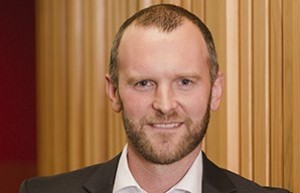Squeeze on mortgage holders deepens
With another 0.75% increase in the OCR seemingly on the cards for February next year after yesterday’s not unexpected 0.75% rise, it is likely fixed mortgage rates will push towards 7% or higher in the next few months, says CoreLogic.
Thursday, November 24th 2022, 11:48AM  1 Comment
1 Comment
by Sally Lindsay

Given the evidence inflation is proving tougher to stamp out than was previously expected and more OCR increases are in the pipeline after February next year to a 5.5% OCR, floating rates are expected to rise shortly and fixed rates are unlikely to have peaked either, says Kelvin Davidson, CoreLogic’s chief property economist.
“After some ‘green shoots of optimism’ had started to emerge through the first half of October, the stubborn inflation reading has in some ways pushed the country into ‘phase two’ of the property market downturn,” he says.
Based on the existing average fixed mortgage rate across the stock of loans of 3.8%, the fortnightly mortgage repayment for every $100,000 of debt (30 year term) is around $215 – or roughly $5,590 per year. But somebody then refinancing to a current rate of 6% would see that repayment jump by $1,602 per year – or more than $8,000 if they had a $500,000 loan.
A potential future rate of 7% would see a change of almost $12,000 for a $500,000 loan. On that note, it’s important to point out 20% of home loans are fixed but due to reprice in the next six months.
As always, however, some perspective is warranted, and a key factor over the coming months remains the labour market, says Davidson.
If unemployment can stay relatively low, most borrowers will continue to service their loans (even at higher mortgage rates and as negative equity becomes more prevalent), and this should help to limit the risk of a rise in bad debts and the downward spiral that could be kicked off by an increase in mortgagee sales.
“Overall, it’s likely the weakness for property sales volumes will linger well into next year. After perhaps about 67,000 sales this calendar year (the lowest since 2010), there may only be a small revival next year to about 68,000 – as rising wages and net migration are offset by a soft economy and higher mortgage rates.”
Meanwhile property value falls are far from over yet either, presenting an opportunity for first home buyers, he says.
The labour market will be watched closely and also any signs the OCR is ‘overshooting’ and therefore the likelihood rates could need to be cut again fairly sharply, says Davidson.
Indeed, this was quite a ‘hawkish’ decision from the RBNZ, indicating that the OCR may eventually have to rise all the way towards 5.5% next year. The RBNZ doesn’t anticipate CPI inflation dropping below 7% until perhaps the middle of next year, when the economy could have tipped into a small recession, with the unemployment rate edging higher (albeit more due to a larger labour force rather than mass job losses). They also expect the ultimate fall in house prices (CoreLogic House Price Index) could be -20% by the end of next year.
So what does all of this mean for the housing market?
| « RBNZ hawkish on inflation | Vincent Capital adds a South Island BDM » |
Special Offers
Comments from our readers
Sign In to add your comment
| Printable version | Email to a friend |



